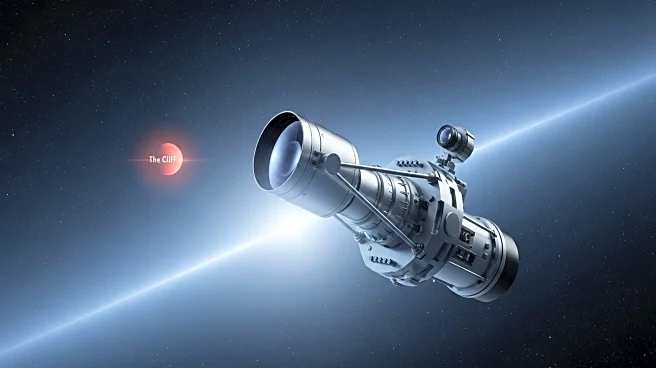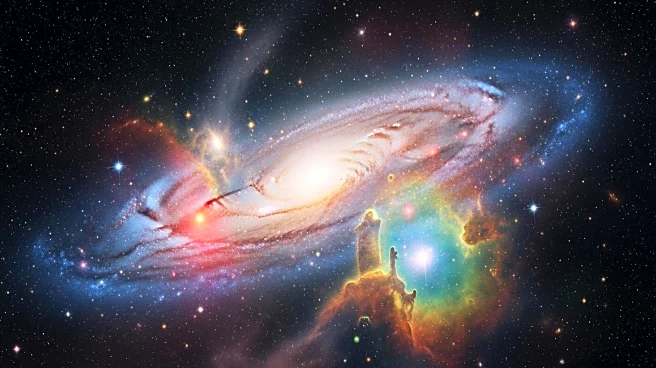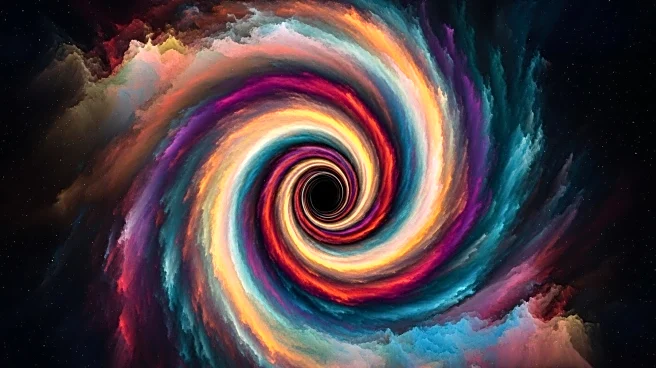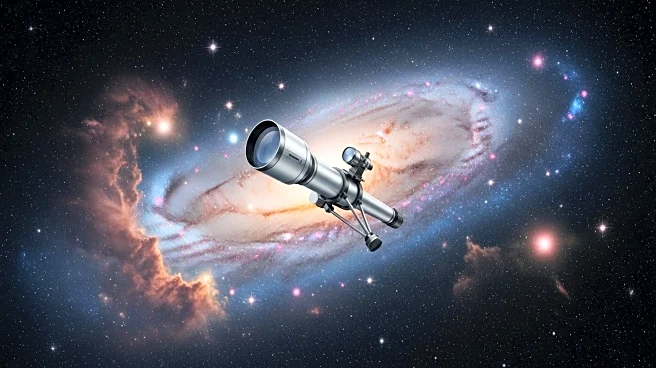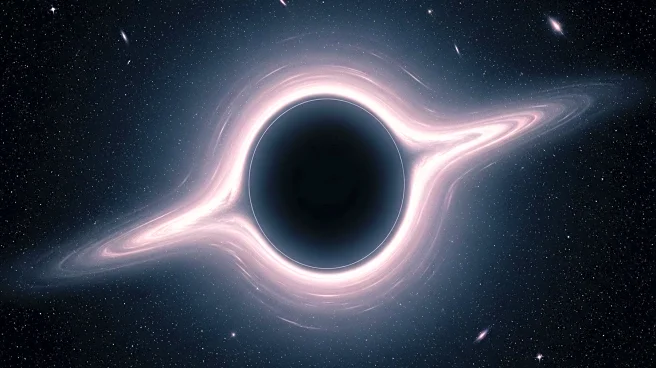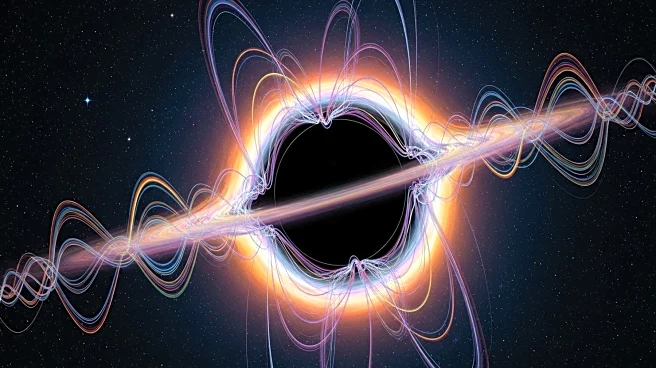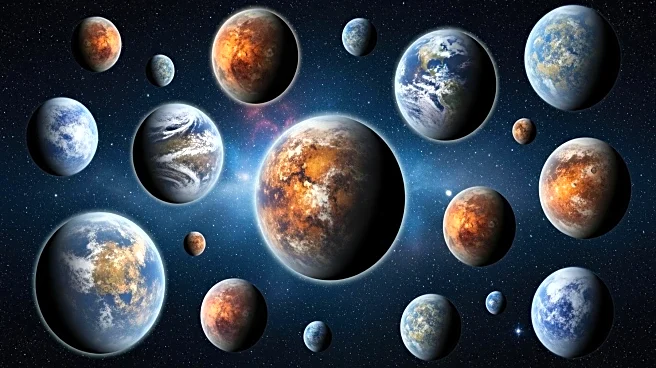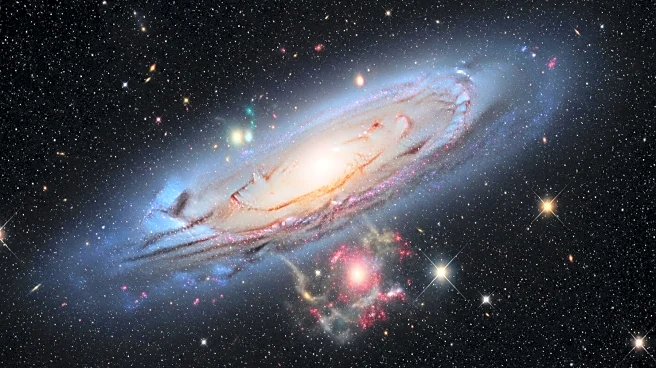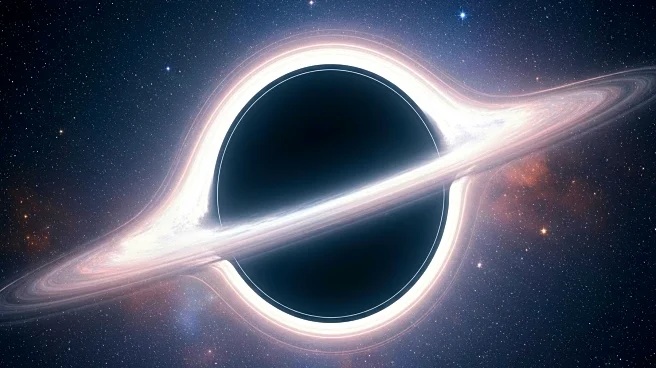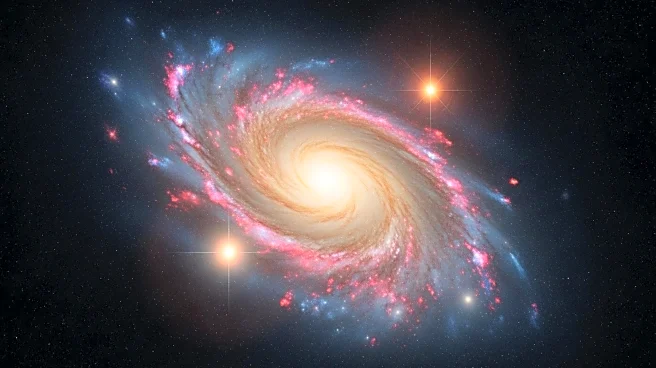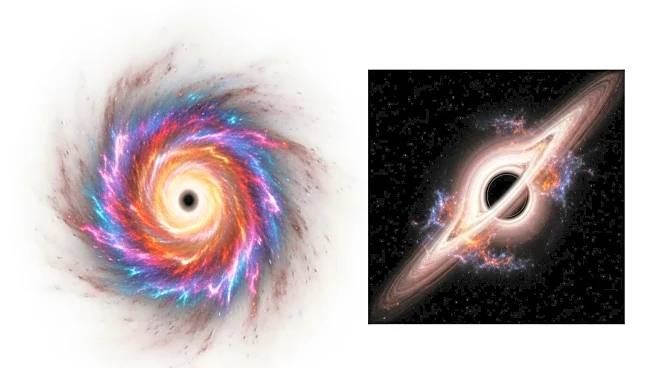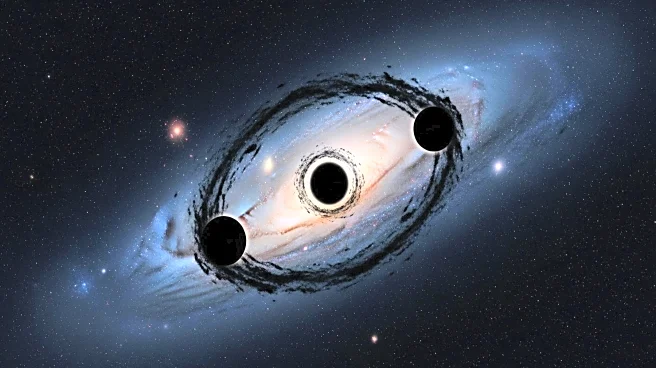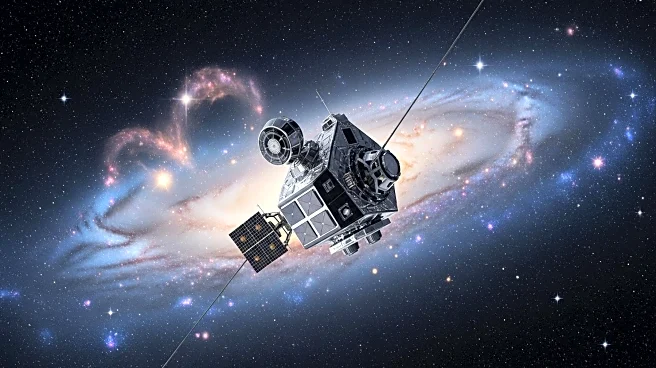What is the story about?
What's Happening?
The James Webb Space Telescope (JWST) has identified a new astronomical object named 'The Cliff,' which may provide insights into the mysterious 'small red dots' observed in space. These red dots, first noticed in 2022, are extremely compact and appear very red due to their emission of light at longer wavelengths. The discovery of 'The Cliff' suggests that these objects might be a new class of supermassive black holes enveloped in thick gas shells. This finding challenges previous interpretations that these red dots were either young galaxies or active galactic nuclei obscured by dust. The research, published in Astronomy & Astrophysics, indicates that 'The Cliff' is an extreme version of these red dots, with its light taking 11.9 billion years to reach Earth, providing a glimpse into the universe's past.
Why It's Important?
The discovery of 'The Cliff' and its potential explanation for the small red dots could significantly impact our understanding of galaxy formation and evolution. If these objects are indeed supermassive black holes with gas envelopes, it could suggest a new mechanism for rapid galaxy formation in the early universe. This challenges existing models and could lead to a reevaluation of how galaxies and their central black holes grow. The findings could also influence future astronomical research and observations, as scientists seek to understand the processes that lead to the formation of such massive structures shortly after the Big Bang.
What's Next?
Further observations and research are planned to confirm the nature of 'The Cliff' and similar objects. The team behind the discovery has secured additional JWST observation time to study these red dots in more detail. These future studies aim to determine whether the 'black hole star' model is accurate and to explore the implications for galaxy evolution theories. The results could lead to new insights into the early universe and the processes that shaped the cosmos as we know it today.
Beyond the Headlines
The potential identification of 'The Cliff' as a new class of astronomical objects raises questions about the formation and sustainability of such structures. Understanding how these black hole stars form and maintain their gas envelopes could provide insights into the dynamics of early universe conditions. This discovery also highlights the capabilities of the JWST in uncovering previously unseen phenomena, emphasizing the importance of advanced technology in expanding our knowledge of the universe.
AI Generated Content
Do you find this article useful?
